Word Families Manual
$14.99
Teachers use Word Ladders to teach and reinforce letter patterns, phonics and rhyming, through writing, reading, and repetition. Word ladders help children learn to read word families. For instance, let’s take the ‘at’ word family. Words within this word family are ‘that, cat, pat, mat, fat, rat, sat, at, bat, hat’. Children learn the word ‘at’ and then, use their phonics skills to sound out each of the other words within the ladder. The children can read up the ladder and down the ladder, easily practicing the words within the word family. As the practice, they get stronger and more confident at reading. Word Ladders help children eliminate phonetic frustration, and help build phonics skills, spelling confidence and self esteem.
For each word family, Mrs. Karle offers three days of word ladder videos. Students can watch just one, or they can watch all three -depending on what they are trying to learn. On Day 1 of each word ladder, Mrs. Karle teaches the children all of the words in the word ladder. She goes up the ladder slowly, sounding out each word. She also gives the students a ‘definition’ for each word, to help increase the students vocabulary. On Day 2, Mrs. Karle quizzes the students in a vocabulary test. For instance, in the ‘at’ word ladder, she may ask the students these questions:
-“What does a baseball player use?” (‘bat’)
-“What can you wear on your head?” (‘hat’)
-“Can you name a very small animal that likes cheese?” (‘rat’)
-“If you touch someone very carefully with your hand,what are you giving them?” (‘pat’)
-What did Little Miss Muffet do on her ‘tuffet’?” (‘sat’)
-“What animal likes to chase a mouse and likes to drink milk?” (‘cat’)
She then will read up and down the word ladder to further practice the students reading and phonics skills.
On Day 3, Mrs. Karle writes each of the words within the word ladder with the student. She sounds out each word, and shows the students the correct way of writing each letter of each word.
Description
Teachers use Word Ladders to teach and reinforce letter patterns, phonics and rhyming, through writing, reading, and repetition. Word ladders help children learn to read word families. For instance, let’s take the ‘at’ word family. Words within this word family are ‘that, cat, pat, mat, fat, rat, sat, at, bat, hat’. Children learn the word ‘at’ and then, use their phonics skills to sound out each of the other words within the ladder. The children can read up the ladder and down the ladder, easily practicing the words within the word family. As the practice, they get stronger and more confident at reading. Word Ladders help children eliminate phonetic frustration, and help build phonics skills, spelling confidence and self esteem.
For each word family, Mrs. Karle offers three days of word ladder videos. Students can watch just one, or they can watch all three -depending on what they are trying to learn. On Day 1 of each word ladder, Mrs. Karle teaches the children all of the words in the word ladder. She goes up the ladder slowly, sounding out each word. She also gives the students a ‘definition’ for each word, to help increase the students vocabulary. On Day 2, Mrs. Karle quizzes the students in a vocabulary test. For instance, in the ‘at’ word ladder, she may ask the students these questions:
-“What does a baseball player use?” (‘bat’)
-“What can you wear on your head?” (‘hat’)
-“Can you name a very small animal that likes cheese?” (‘rat’)
-“If you touch someone very carefully with your hand,what are you giving them?” (‘pat’)
-What did Little Miss Muffet do on her ‘tuffet’?” (‘sat’)
-“What animal likes to chase a mouse and likes to drink milk?” (‘cat’)
She then will read up and down the word ladder to further practice the students reading and phonics skills.
On Day 3, Mrs. Karle writes each of the words within the word ladder with the student. She sounds out each word, and shows the students the correct way of writing each letter of each word.
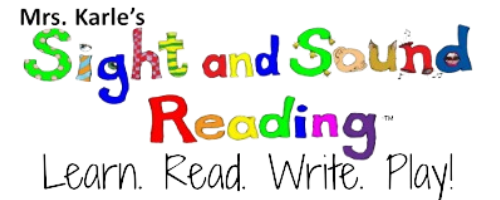
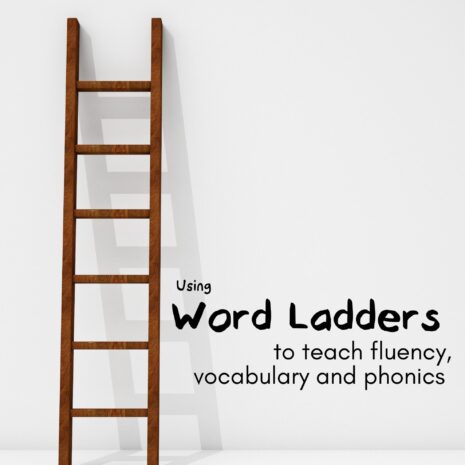
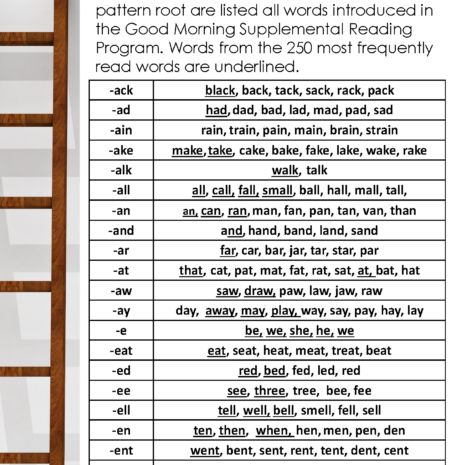
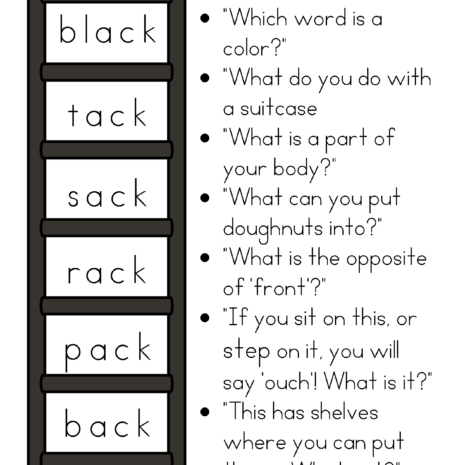
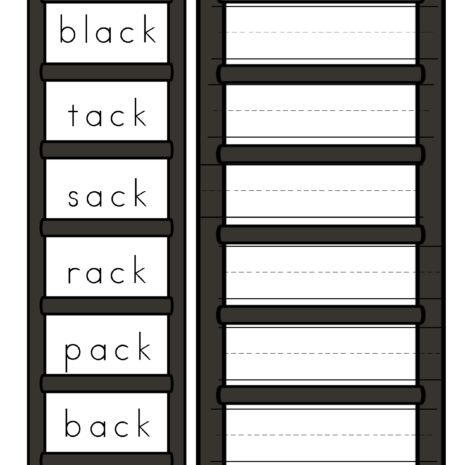
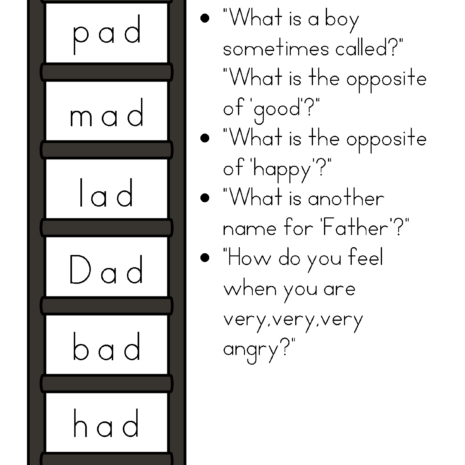





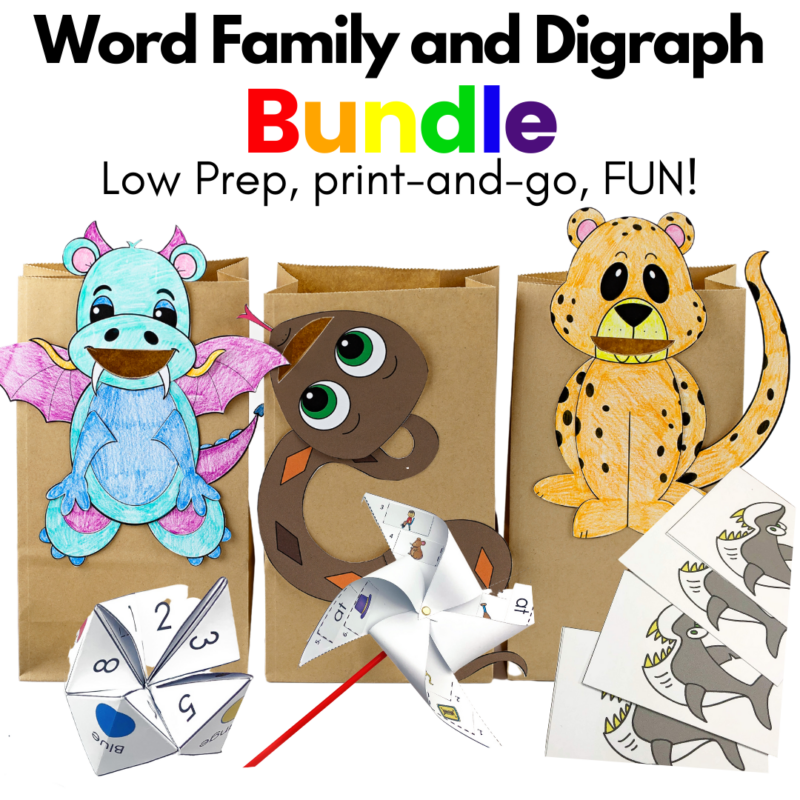
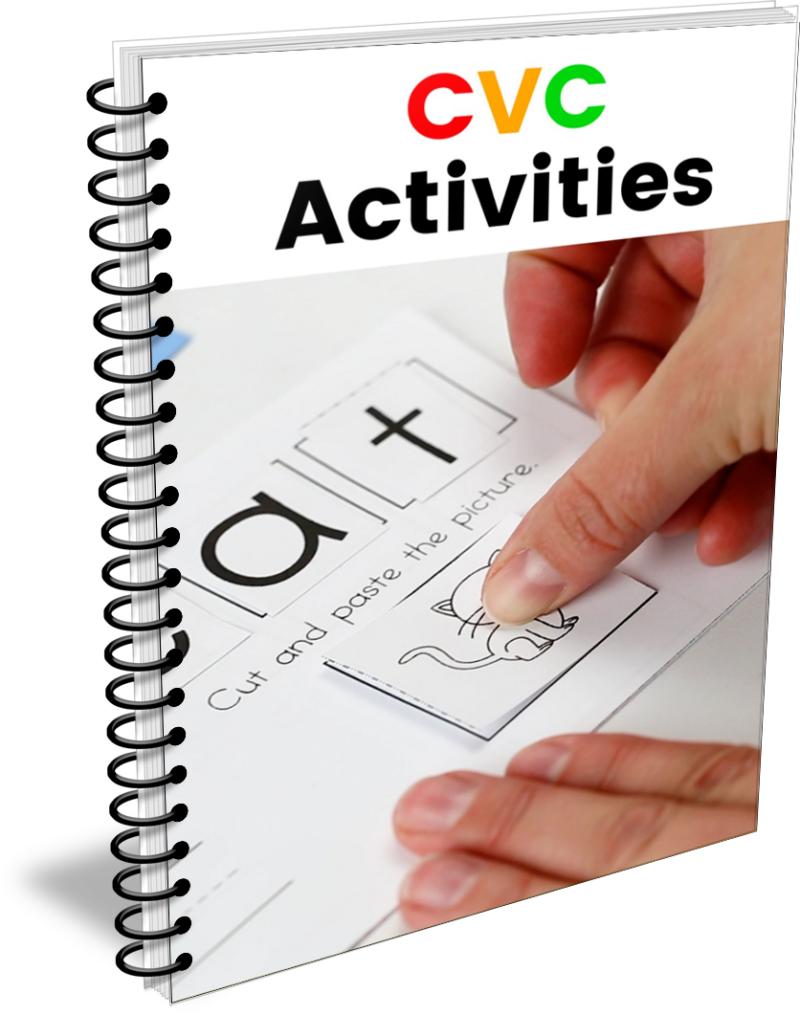
Reviews
There are no reviews yet.